How to Stop Your Cat From Biting: 8 Vet-Backed Tips That Actually Work

Does your cat keep sinking its teeth into you? Don't worry — you're definitely not the only one. Biting is pretty common in both kittens and adult cats, though they usually have different reasons for doing it. While kitten bites may seem harmless, it's still important not to let them slide. And yes, you can train your cat to stop biting, no matter how old they are.
Why Cats Bite: What’s Going On?
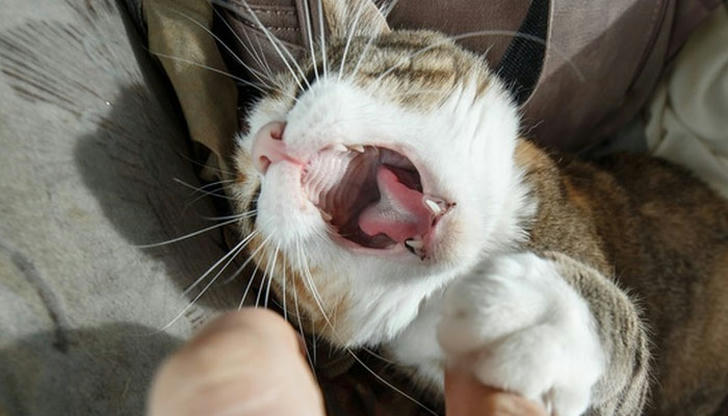
Cats don't bite out of nowhere — there’s usually a reason behind it. Figuring that out is the first step to putting a stop to the habit.
1. Play Fighting

Kittens are full of energy and often learn how to interact with the world by roughhousing with their siblings. Claws and teeth are part of that play — it's instinctual. This is how they test boundaries and learn that biting too hard isn't okay, based on the feedback they get.
2. Trying to Get Your Attention

Sometimes your cat wants food, playtime, or just a little love — and when meowing or rubbing against you doesn't work, a nibble might be their next move.
3. Trying to Be the Boss
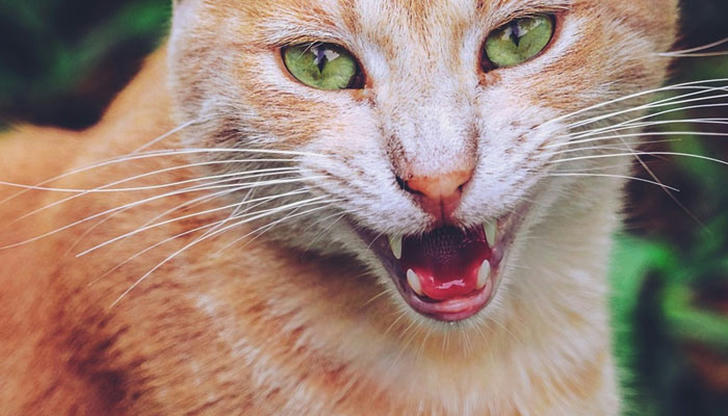
Cats aren't pack animals, but they are territorial. Some cats may bite or swat to show dominance, especially if they feel threatened. This kind of behavior might come with a hiss or growl.
4. They’ve Had Enough
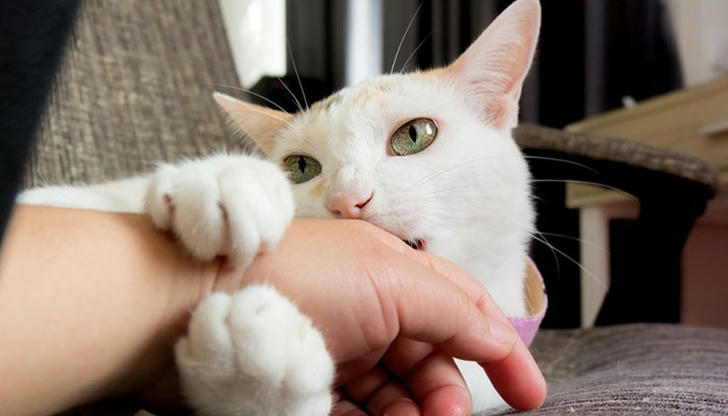
If your cat bites during petting or brushing, it could be their way of saying "I'm done." They usually give warning signs first, like tail flicking or ear flattening, before resorting to a bite.
5. Fear or Stress
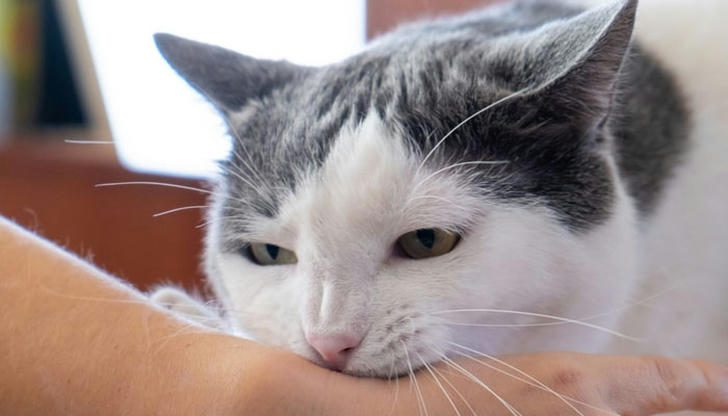
A frightened or anxious cat might bite as a defense. Sometimes it’s because of a stressful situation — like a vet visit or a new pet in the house — or because they’ve learned that biting gets them out of uncomfortable things.
6. They’re in Pain
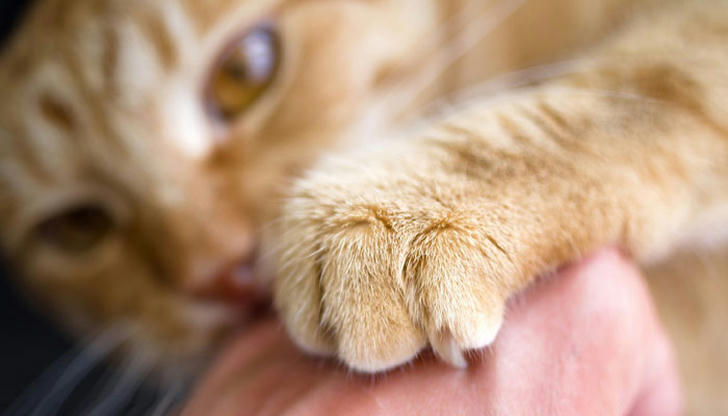
If a cat suddenly bites when touched in a certain spot, it could be a sign something's hurting. Even if there's no visible injury, there could be something going on under the surface.
8 Easy Ways to Teach Your Cat Not to Bite

Changing a cat's behavior takes patience, especially with older cats, but it’s definitely doable if you’re consistent and gentle. Here's how to get started:
1. Don't Yank Your Hand Away
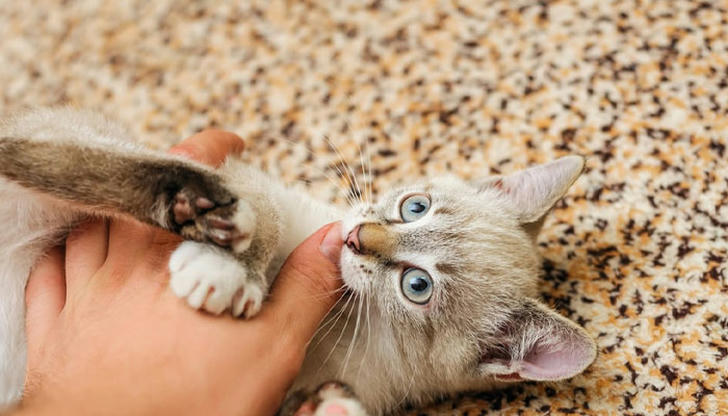
Your first instinct might be to pull your hand back fast — but that often makes the cat bite down harder. It's a natural reaction, like when prey tries to escape.
Instead, gently push your hand toward them. It sounds weird, but it often startles them just enough to get them to let go without clamping down.
2. Skip the Punishment

Yelling or pushing your cat away after a bite can backfire. They might think you’re just playing rough or they could get scared and act out more.
The better move? Walk away and ignore them for a few minutes. This teaches them that biting = no attention or play, which is something cats definitely pick up on over time.
3. Know When to Back Off
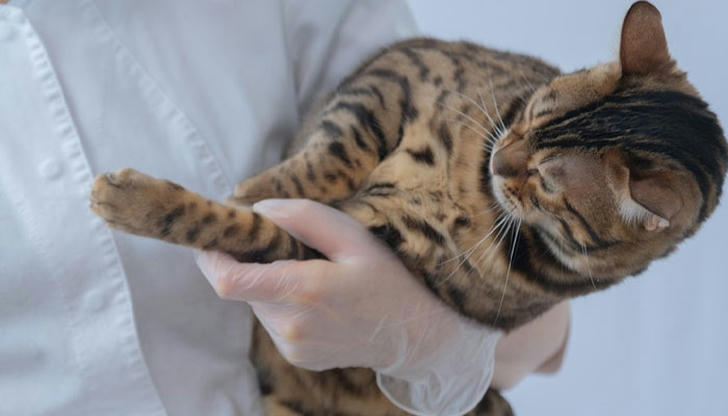
Learn your cat's limits. Some cats enjoy being cuddled for a bit, then suddenly switch moods. That's normal — they're enjoying the affection but also feel vulnerable. Pay attention to warning signs and give them space before things escalate.
4. Use Toys, Not Fingers
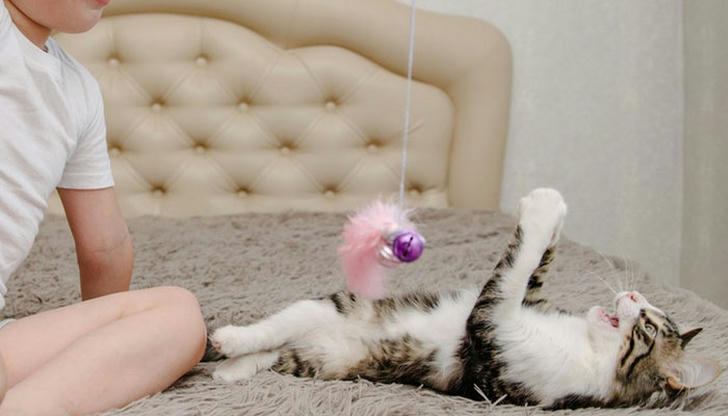
Never use your hands or feet as toys. Wiggling your fingers might seem cute, but it tells your cat that it's okay to bite them — even when you're not playing.
Invest in some fun, interactive toys to redirect their energy. Ideally, have a few different options so they don't get bored.
Need suggestions?
- Hepper Hi-lo Cat Scratcher — durable, multi-angled, perfect for climbing or stretching.
- Hepper Catnip Mice Toy Set — made with sturdy hessian fabric and packed with organic catnip.
5. Reward the Good Stuff
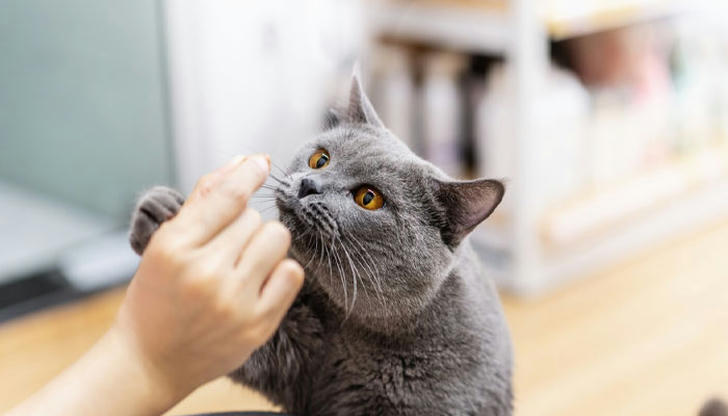
Cats respond well to positive reinforcement. When they choose a toy over your hand, or gently paw at you instead of biting, reward them with praise, a treat, or a cuddle.
This helps them make the connection between calm behavior and getting something they like.
6. Keep Life Predictable

Cats are creatures of habit, and changes to their routine can lead to stress — and stress can lead to biting.
Try to keep feeding, play, and nap times consistent. A steady routine helps your cat feel more secure and relaxed.
Also, make sure their basic needs are being met: enough food, mental stimulation, and rest.
7. Stick to the Plan

Whatever method you choose to stop biting, be consistent. If you walk away when they bite, do it every time.
Everyone in your home needs to follow the same rules too — if one person allows biting during play, your cat will just get confused.
Even occasional visitors should be briefed on how to interact with your cat to avoid mixed messages.
8. Talk to a Vet

If your cat suddenly starts biting or seems unusually aggressive, it’s worth checking in with a vet. Pain or illness can cause a cat to lash out, even if they're usually sweet.
Final Thoughts

Biting might be common cat behavior, but that doesn't mean you have to live with it. With a bit of patience, the right approach, and a good understanding of your cat's needs, you can help them learn to play and interact without using their teeth.
And remember — every cat is different. What works for one might not work for another, so don't be afraid to try different strategies until you find what clicks.
